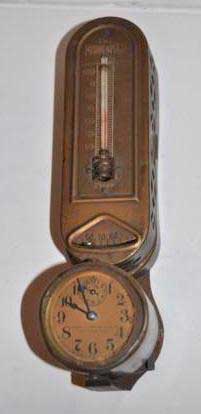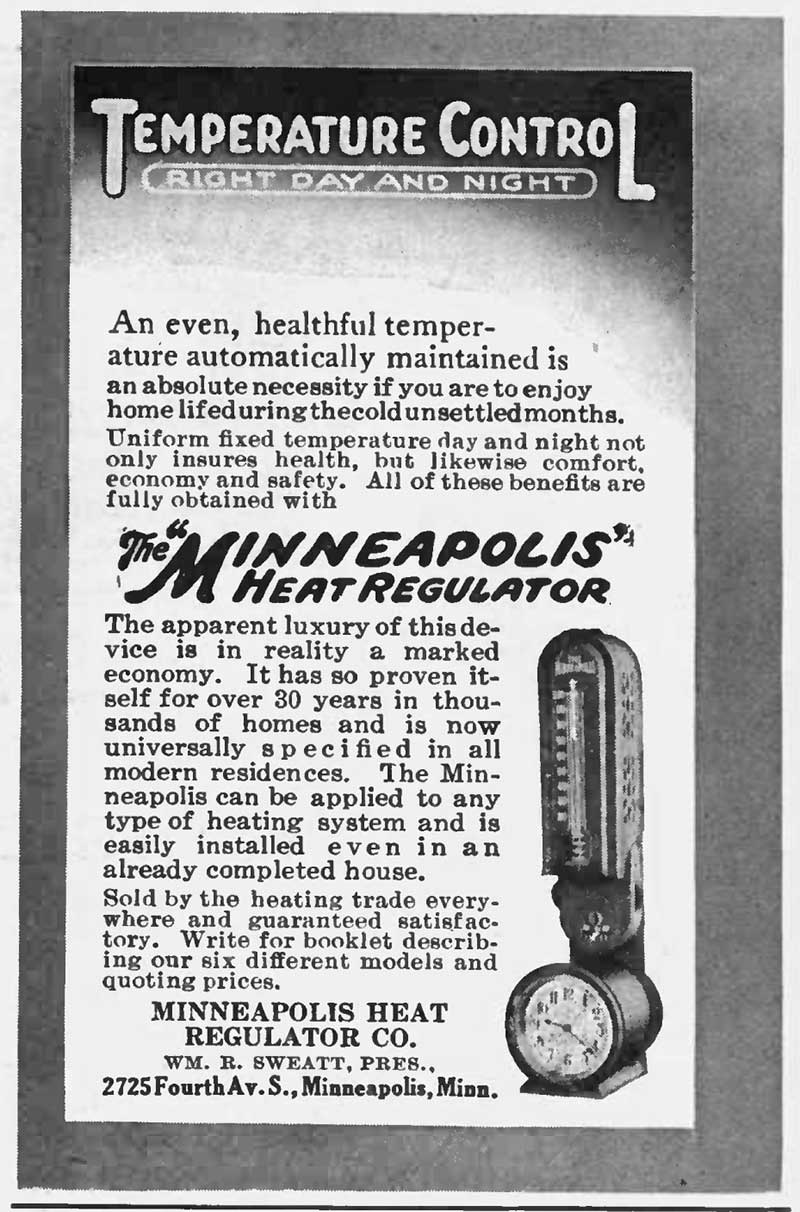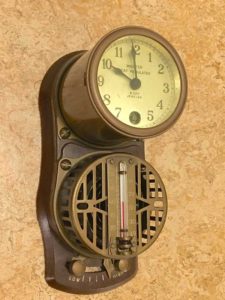Small Home Gazette, Winter 2016
Answers to Your Toughest Bungalow Questions: vintage thermostats
I did some research on installing a vintage Honeywell, and I know it can be done. This thread had some helpful information: http://tinyurl.com/j2eah6h. And this Heating Help forum is a good resource: http://tinyurl.com/zluy5vb.
A: Twin Cities Bungalow Club president Tim Counts responds: Thanks for the question and for the helpful web links.
I can tell you that my bungalow’s original thermostat was located on an inside wall in my dining room. The new one is in the same place. That wall seems to be a common location for Twin Cities bungalow thermostats.
I also asked some handymen and contractors who advertise in this newsletter for their opinion. Below are their responses.
Krishna Dorney, owner of Metropolis Construction, writes: “Thermostats are usually placed in the center of the house, five feet off the floor, and away from any radiators or heat registers. The dining room or the hallway outside the bedrooms and bath are typical locations. It’s not common to place them in a kitchen because it typically stays warmer than the rest of the house.”
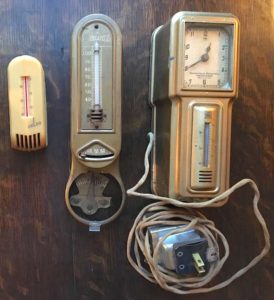
Three vintage thermostats from club member Bill Blood’s collection. From left to right is a 1934 Delco; a 1918 Honeywell model called The Minneapolis (missing its clock); and a Minneapolis-Honeywell Chronotherm, complete with electrical cord and wall plug.
Jim Madson, owner of Fillmore Associates, responds: “Here are the simple rules for thermostat placement:
- never on an outside or cold wall,
- never above or below a heat vent and
- never above or below a cold air return.
A thermostat should be on the main floor in an area where there will be a minimum of air movement.”
I also met with Bill Blood (aka This Old Handyman), who brought out a small collection of vintage thermostats. Bill and his wife Liz use a 1930s Honeywell thermostat to regulate the temperature in their 1914 home, which is heated with its original hot water radiators.
Now that we know where they were likely located, you may be curious about what they looked like. Many years ago, I purchased a near-mint-condition thermostat patented in 1925 by the Minneapolis-Honeywell Regulator Co. It’s a beautiful piece of technology, and it’s got a feature that surprised me: an automatic temperature setback, controlled by an integrated, eight-day, key-wound clock.
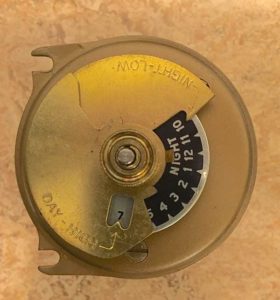
The backside of the clock reveals a timer mechanism. The thermostat can be set so that the heat automatically turns up in the morning and down at night.
I loosened a couple of screws and removed the clock, revealing a 24-hour timer on its backside (see photo). Apparently, the homeowner could set a time for the furnace to kick in (mine had been set for 7 a.m.) and a time for it to switch to a nighttime low setting (mine had been set for 10 p.m.). On the lower portion of the unit is a mechanism for setting the specific high and low temperatures. Surprisingly sophisticated technology for the time.
Could such a thermostat be used today? Possibly. Many older thermostats were designed to work on low-voltage wiring, just like doorbells, Jim Madson explained. To use them with modern furnaces you might need to install a transformer between the thermostat and furnace.
Then there’s the issue of central air conditioning. The original bungalow dwellers didn’t condition the hot summer air with anything but open windows and fans. Therefore, the era’s thermostats can’t be switched from “heat” to “cool.”
I’ve long wanted to replace my modern, white plastic, digital thermostat with my vintage 1925 Minneapolis-Honeywell Regulator Co. thermostat. It would be only for looks, of course, but it would show nicely against my dining room’s Arts & Crafts wallpaper and next to my oak woodwork. I’d simply move my new, functional thermostat to the other side of the same wall, so it would be in my short hallway.
Of course, that’s just one more house project to add to my list.









